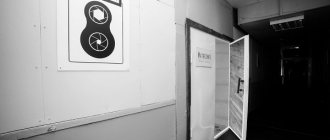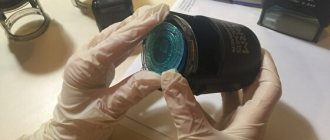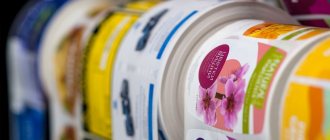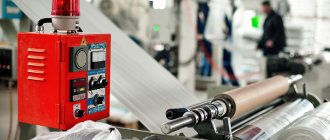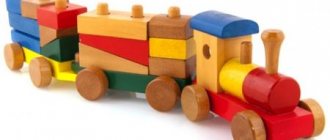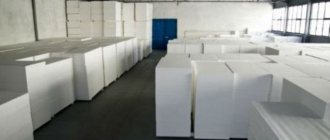The business of manufacturing seals and stamps is considered an attractive activity, due to the minimal investment in the project at its start. Having carried out simple calculations, we can conclude that the invested funds will pay off in just two months. To obtain such results, it is necessary to take into account all the intricacies of the business. It is important to competently resolve organizational issues related to the choice of production technology and the acquisition of equipment corresponding to it.
Making stamps and seals as a business
Production technologies
Before registering a business activity, it is recommended to draw up a business plan for production, in which you should decide on the type of printing technology. The type of equipment purchased will depend on it, the cost of which will form the investment parameters for starting the project. Technologies used in practice:
- laser;
- vulcanization;
- photopolymer;
- flash.
Laser technology
The laser engraving method involves applying an image to a piece of equipment using a laser. Its implementation requires the purchase of expensive equipment, which will allow the production of a high-quality product. The optimal solution would be to purchase a CNC laser machine. Its main element, the quality of which determines the price parameters, is the optical system subjected to laser study. It is projected above the workpiece and processes its surface with the detail of the programmed image, which can be in raster or vector formats. The machine can apply a pattern to a matrix of any quality, since the radiation power can be adjusted on it.
The essence of laser processing is the impact of a high-energy beam on a material. Matrix processing is carried out in a point manner, as a result of which the surface of the material melts at the locations of the recesses in the pattern, which contributes to the formation of reliefs. Shaped processing of the material is carried out by moving the laser head over it in accordance with the graphic program in accordance with which the work is carried out.
Preparing a layout for a cliche
During the production of seals, the only waste generated is in the form of gases, so the production room must be equipped with a ventilation system. With continuous operation of the machine, the entrepreneur will have to additionally spend money on the purchase and installation of a forced exhaust.
Vulcanization technology
When making seals using the vulcanization method, inexpensive equipment is used in the form of a special lamp. The essence of the method is to apply a special film with an image previously applied to it onto the matrix and treat its surface with lamp rays. As a result of their influence, the rubber under the transparent area of the film is baked and becomes impermeable to paint. The rubber does not bake under the lines of the pattern and retains its property of absorbing liquids.
The finished cliche is installed on the equipment and impregnated with paint. At the request of the client, it is possible to make multi-color printing, transmitting up to six shades. Products made in this way do not wear out because they have a smooth working surface. It is impossible to produce them in non-standard sizes using this method.
A bonus for an entrepreneur who has chosen vulcanization technology is the absence of inks for refilling printing on the open market, so clients will turn to the contractor to receive the service.
There is another vulcanization method, the implementation of which will require the purchase of a heat press. A matrix made of oil and petrol resistant material is used as a consumable material. Nothing will work on microporous rubber.
There are several technologies for making stamps and seals:
- laser engraving. It makes it possible to obtain products of very good quality, but the equipment is quite expensive.
- mechanical engraving. Suitable for making dies from metal, but not very suitable for rubber or plastic. Production in this way is quite labor-intensive.
- production of stamps and seals from liquid polymers (photopolymers). This is the most popular technology, which makes it possible to obtain products at a low price, and there is no rubber smell during the production process. Equipment for this technology takes up little space, is easy to operate and makes it possible to obtain high-quality products. The disadvantage is the high cost of raw materials and large amounts of water for washing the dies. In addition, seals made using this technology wear out faster than those made using other technologies.
- production of stamps from solid polymers. They are used for pad printing.
- flash method. With this, it is possible to automatically produce stamps and seals from microporous rubber. You can get one print per cycle, and this reduces productivity slightly.
If you decide to make stamps and seals from liquid polymers , then you need an exposure chamber, a chamber for drying the resulting product and an automatic washing machine, or a place where this can be done manually. In addition, you need a computer to make a layout. You can print the image on film from a third-party manufacturer.
At the beginning of activity, the drying cabinet is replaced with a fan.
Now we will briefly describe some interesting models (equipment for making stamps).
Business Investments
To open a business, investments are required in the purchase of equipment and the rental of premises in which it will be located.
The company can successfully operate in a small area rented in a shopping center or on the territory of regulatory or authorized bodies that visit newly registered entities. An additional expense will be the state fee, which must be paid to provide the registration service of entering into a unified database of business entities. When drawing up a business plan for a project, the cost budget should include the costs of providing an advertising campaign and promotion-oriented events. If an entrepreneur at the initial stage plans to independently ensure the functioning of the company, then the payment for his work will be considered the profit received as a result of the activity.
Technology for making prints from photopolymers.
Photopolymer technology for making stamps - this process begins with drawing a sketch in a graphics editor. After the sketch is drawn and approved, it is printed on a laser printer. This is an essential part of starting the production process, no matter what technology you use. The negative is treated with a special darkening agent to give it optical density. The edges of the negative are covered with border tape, a protective film is placed on top, which forms the height of the printing cliché - a shape is obtained. Liquid polymer is poured into it and placed in a copy cassette, after which it is placed in the exposure chamber for a certain time. The part from the negative side is illuminated first. after this side is illuminated, the workpiece is turned over and placed back into the chamber. When the exposure time has expired, the negative is removed from the mold, thoroughly washed with running water and detergent (this is how the remaining liquid polymer is washed off); after washing, the cliche is again placed in the chamber for 10 minutes for final hardening. After all these procedures, the cliche is cut out and inserted into the equipment.
Advantages of seals made using photopolymer technology : low production costs, low costs for organizing production, ease of production.
The disadvantage of photopolymer technology is the limitation in resolution.
How to increase business profitability
You can increase the profitability of your business by expanding the list of services.
An entrepreneur can make not only seals and stamps, but also various imprints with the inscriptions “paid”, “checked”, “copy is correct”. A business representative can earn additional income by restoring lost seals, producing official seals for government agencies and facsimiles.
Related services may include creating sketches of seals, developing business cards and photocopying documents. The additional service will not require additional investments from the entrepreneur, since it can be implemented on the equipment used to provide the basic service.
Start-up capital
Before opening a company that offers stamp production services, you need to draw up a business plan. Seals and stamps are products that will always be in demand.
To earn income, first of all, of course, you need to invest in this area.
If you, for example, plan to produce prints using polymer technology, you will have to invest about 150-200 thousand rubles.
Self-sufficiency can be expected from 3-5 months after opening, and full return on investment will be possible in 6-12 months. This is mainly due to low costs at all stages of production.
How to succeed
Equipment that can be used not only for making stamps, but also for issuing discount cards and business cards.
The secret of business success depends not on the choice of technology and on the generated list of services, but on their conscientious and high-quality implementation, as well as on the politeness of service. At the initial stage of a company’s work, its management must competently declare its presence in the services market. A well-organized advertising campaign will help you overcome the competition. It is recommended to run advertising not only in the region where the point is located, but also beyond it.
You can quickly get started and take a reliable position in the market through a partnership with a registration company that would offer newly registered clients stamp production services in a partner organization.
By providing services in good faith, you can count on promotion based on the “word of mouth” principle. To do this, it is necessary to use only high-quality raw materials, comply with regulated standards and production technology. Do not forget about attentive attitude towards customers.
Remote business
It is worth noting that the stamp making business can also be run remotely. That is, not only to produce stamps for companies and organizations in your region, but also for other enterprises that are located outside your locality.
To do this, it is enough for companies that cannot come to you in person to send you a sketch of the seals by fax or mail. All additional conditions (type of material and equipment) can be discussed over the phone. Finished products can be sent by courier or mail. This type of activity will bring good additional profit.
Results
The biggest investment in business for an entrepreneur who decides to enter the cliche making business will be the purchase of equipment. At the start, you need to expect to invest up to 200,000 rubles in the purchase. Equipment for the production of seals and stamps must correspond to the selected technology.
To produce high-quality products, do not forget about the compliance of the characteristics of consumables with regulatory requirements and compliance with technology regulations. The image of a successful company will be completed by friendly service, competent advice and a well-executed advertising campaign.
Photopolymer technology
The method of making a polymer print is based on the application of an ultraviolet ray of a certain spectrum to the material. The beam penetrates certain illuminated areas, and where it is necessary to make convex parts, the beam sinteres the polymer thanks to the light parts of the negative. Consumables, as well as the equipment used to make the printing cliché, are reasonably priced. This method is the simplest, cheapest and fastest, and therefore is very popular.
Advantages of the technology: it differs from other technologies in the greatest simplicity and speed of production of the printing form, it is also the cheapest, which, in principle, in most cases (approximately 90%), does not affect the quality of the product and suits the majority of customers.
Disadvantages: 1. Photopolymer (the material used in this technology) is not resistant to alcohols and solvents, so for such seals and stamps you can only use water-based stamp ink, i.e. They can only be placed on good quality paper. For cardboard, burlap, foil, fabric and other materials where it is important that the stamps/seals do not wash off (erase, fade), such seals and stamps are not suitable.
2. Thin lines and raster images can be made, but their quality will leave much to be desired; (the resolution of this material is not great)
3. This material is relatively soft and flexible, which is more of a disadvantage than an advantage when using the product. When the product is used frequently, the material “floats”, i.e. a seal with an initial diameter of 38 mm after 3-4 months of operation can increase to 39 mm, and in organizations with which you work, for example, in the bank where you are served, they begin to ask “questions” or even refuse to accept payments with such a seal. What to do in such a situation? There is only one way out - call us and order a new seal using the old print.
Types of seals, stamps and how they differ from each other
Seals are devices designed to make round (less often oval) imprints on paper and/or other materials containing information about the name of an individual or legal entity. The dimensions of the seal are strictly regulated by the state standard and are 40-50.1 mm in diameter. The products consist of two parts - the cliche itself for applying the print and the body (equipment) where it is installed. The main purpose of the seal is to certify documents to certify their authenticity.
A stamp is a separate type of seal. Its main difference is that the information applied does not have legal force, but is used as a kind of “substitute” for handwritten text information, which is often used in the work of the organization. That is why there are stamps of different shapes and sizes with a variety of images. Most often, the stamp has a rectangular shape (but can be diamond-shaped, triangular, hexagon-shaped, etc.) and contains data on bank details, postal, legal addresses, etc. There are such types of stamps as address (corner), urgent, to restrict access, marking, registration, dater, numerator, bookplate, facsimile, others (“the copy is correct”, “deregistered”, etc.).
Photo: Stamp designer mystampready.com
The final cost of products includes the costs of producing cliches and equipment. The latter can be manual or automatic, made of plastic, wood, or metal. The price is also influenced by the technology for making cliches, the degree of urgency of the service, the delivery method and other factors.

